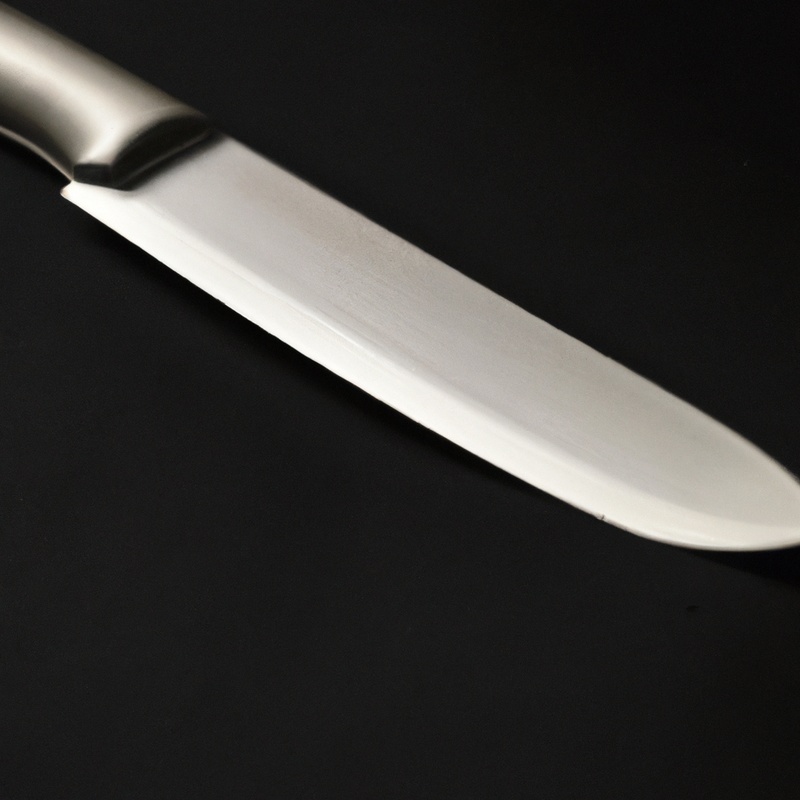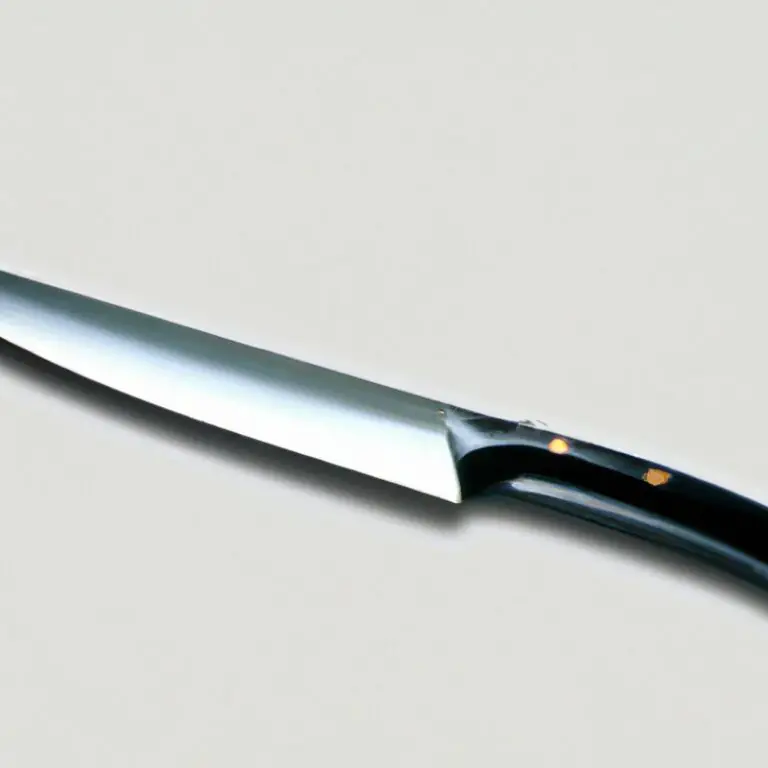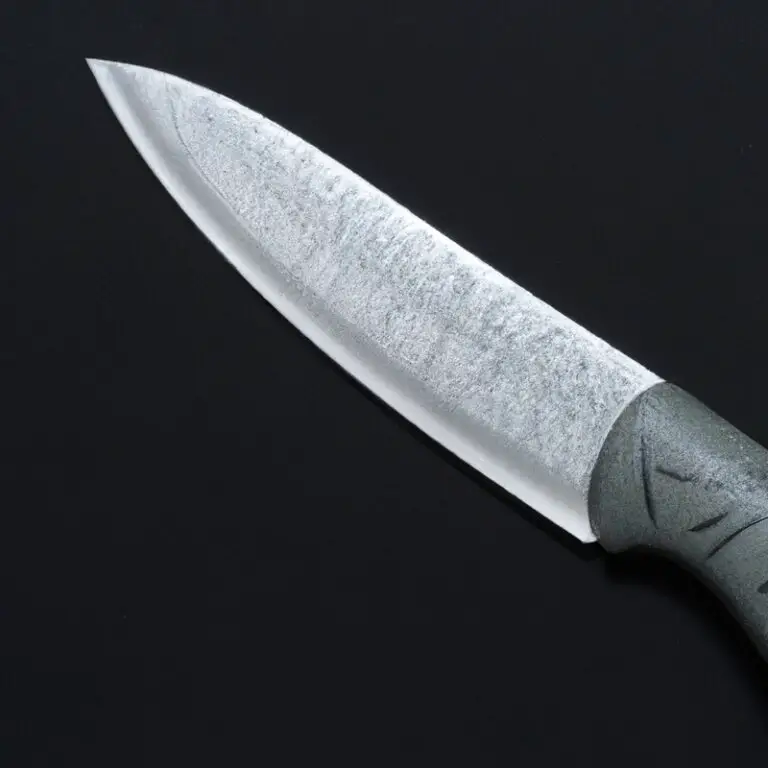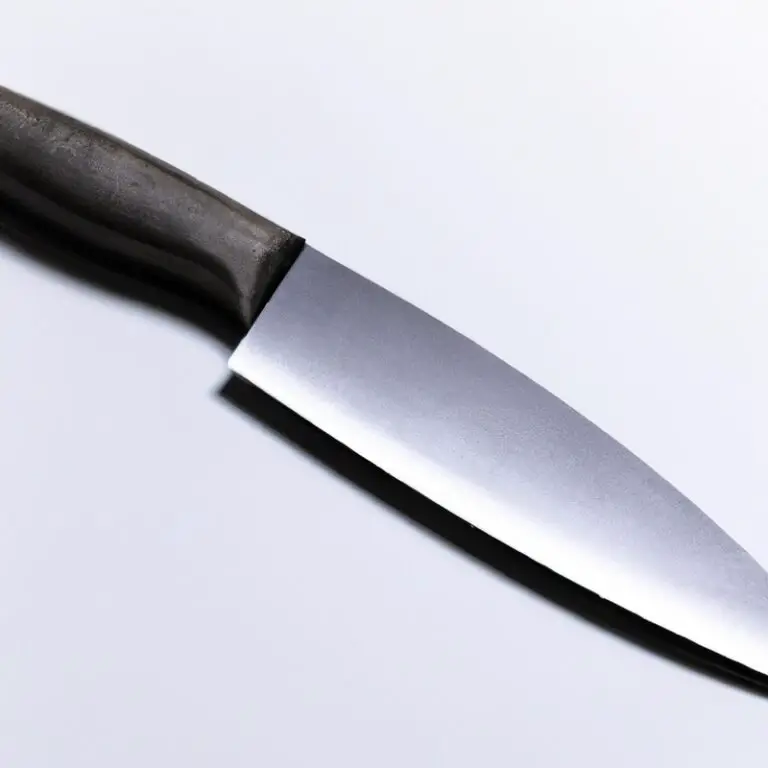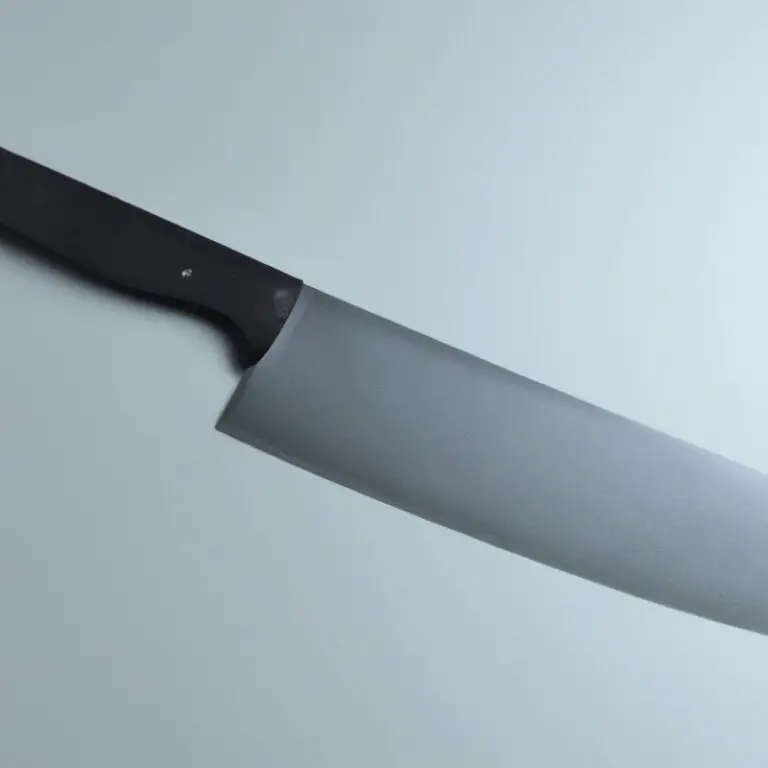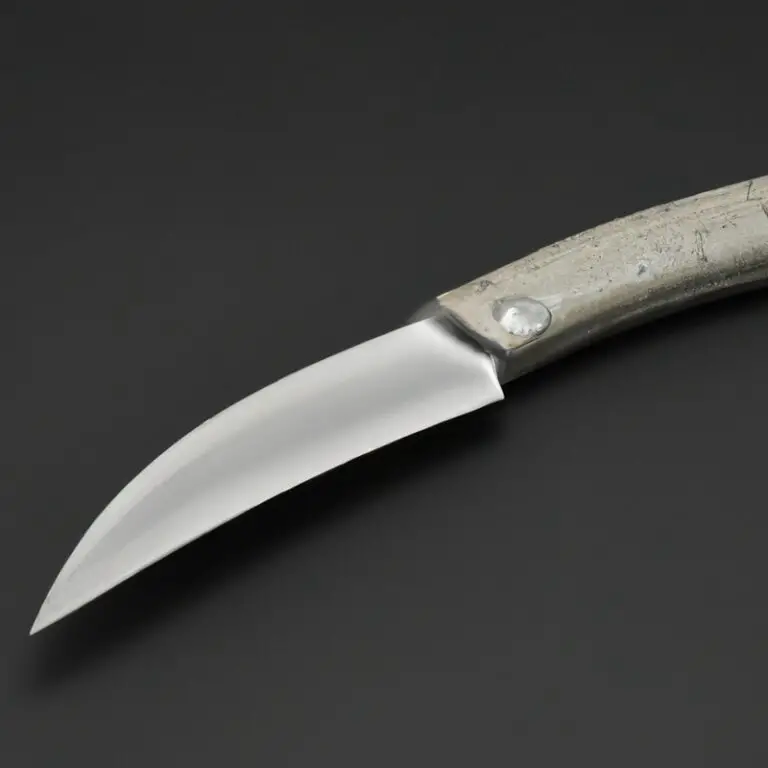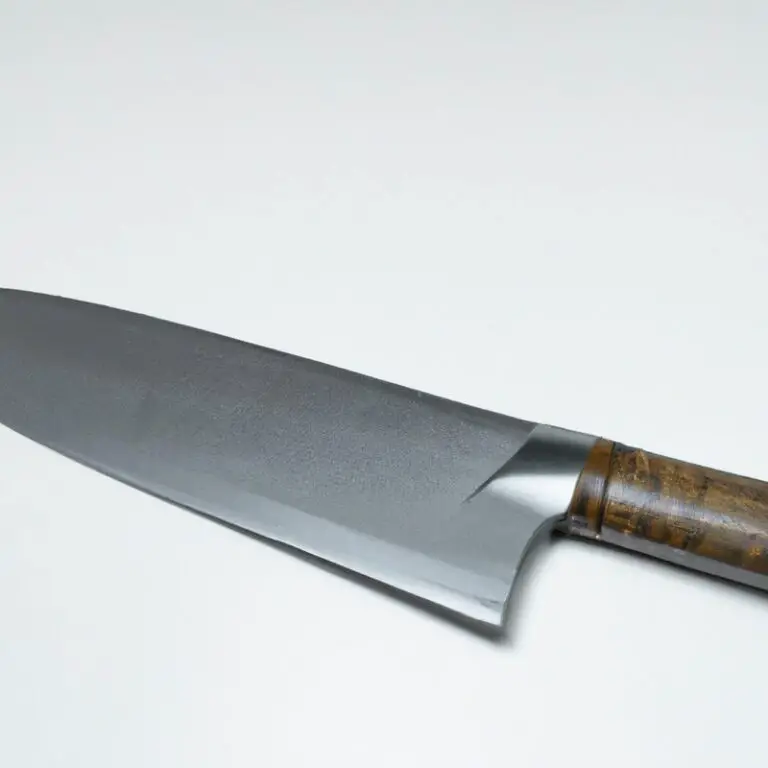How To Achieve Smooth Rocking Motions With a Gyuto Knife? Master Rocking Now!
Key Takeaways:
- Choose the right Gyuto knife with a sharp blade and comfortable grip to achieve smooth rocking motions.
- Practice proper technique by positioning your hand correctly on the knife and utilizing a fluid motion.
- Maintain the sharpness of your knife by honing and sharpening it regularly to avoid frustrating rocking motions.
- With patience and practice, you can achieve effortless and efficient rocking motions with your Gyuto knife, enhancing your culinary skills.
When it comes to cooking, having the right knife can make all the difference in your experience. Enter the Gyuto knife – a versatile and essential tool for any chef.
But using this Japanese knife can be daunting, especially when it comes to achieving smooth rocking motions.
Fear not! In this article, I’ll guide you through every step of achieving a fluid, effortless rocking motion with your Gyuto knife. From understanding its anatomy to mastering advanced cutting techniques, you’ll soon be chopping, slicing, and dicing like a pro.
Let’s get started!
| Technique | Description |
|---|---|
| Rocking Motion | Use a gentle back-and-forth motion to slice through ingredients with the tip of the knife remaining in contact with the cutting board. |
| Finger Placement | Place your index finger on the top of the blade and curl your other fingers around the handle for a secure grip. |
| Blade Angle | Hold the knife at a 20-30 degree angle while rocking back and forth to achieve a smooth, continuous motion. |
| Knife Sharpness | A sharp blade is essential for achieving a smooth rocking motion, so sharpen your knife regularly using a honing steel or whetstone. |
Understanding the anatomy of a Gyuto knife for smooth rocking motions
To achieve smooth rocking motions with a Gyuto knife, it’s essential to understand its anatomy. The Gyuto knife blade has a curved edge that facilitates easy rocking back and forth motion.
The blade is thin and sharp, making it ideal for precise cuts.
The handle is comfortable to grip and provides excellent control while cutting. However, the length and weight of the Gyuto knife can differ, so it’s essential to choose one that suits your preference.
Overall, the anatomy of a Gyuto knife is designed to facilitate smooth rocking motions and effortless cutting.
How to choose the right cutting board for optimal Gyuto knife performance
Choosing the right cutting board is crucial for optimal Gyuto knife performance. Here’s how to select the perfect cutting board for effortless and efficient cutting:
- Material: Avoid glass, ceramic or stone cutting boards as they can dull the knife’s edge quickly. Choose a wooden cutting board or a high-quality plastic board as they are gentle on the knife’s edge.
- Size: Choose a cutting board that is large enough to accommodate the knife’s full cutting motion without hitting your countertop. It should also have enough space to hold ingredients during cutting.
- Thickness: The ideal thickness for a cutting board is around 1.5 to 2 inches. A thicker board will absorb shock, reducing the wear on the knife’s edge, and also allow for a firmer grip.
- Stability: The cutting board should sit securely on your countertop with no wobbling or sliding. A non-slip base or rubber feet can provide added stability.
- Maintenance: The cutting board should be easy to clean and maintain. Wooden cutting boards require regular oiling to prevent cracking, while plastic boards can be easily washed in a dishwasher.
By following these guidelines, you can choose the perfect cutting board for optimal Gyuto knife performance and achieve smooth, efficient cuts every time.
Achieving the perfect grip and hand position for effortless rocking motions with a Gyuto knife
To achieve the perfect grip and hand position for effortless rocking motions with a Gyuto knife, follow these simple steps:
- Hold the handle with a secure grip using all your fingers, including the thumb, on the handle.
- Place your index finger on top of the blade, near the handle, to guide your movements.
- Curl your other fingers under the handle for stability and control.
- Keep your wrist straight and avoid bending it, as it can cause discomfort and injury.
- Position the blade at a comfortable angle and apply gentle pressure while rocking back and forth.
Practice these techniques regularly to develop muscle memory and achieve a smooth, efficient motion with your Gyuto knife.
Sharpening techniques and tools to maintain the razor sharpness of your Gyuto knife
To maintain the razor sharpness of your Gyuto knife, it is essential to sharpen it regularly. You can use sharpening stones or honing rods for this purpose.
Sharpening stones come in different grits, and it is recommended to start with a coarse grit stone, followed by a fine grit stone for better results.
Honing rods, also known as sharpening steels, are used to straighten and realign the blade’s edge between sharpening sessions. Before sharpening, make sure to clean the blade and dry it thoroughly.
Keep the blade at a consistent angle while sharpening and apply enough pressure to remove any nicks or damage.
It is recommended to maintain an angle of 15 to 20 degrees while sharpening a Gyuto knife. After sharpening, you can use a stropping tool or leather strop to polish the blade’s edge further.
Stropping helps to remove any burrs or micro-serrations, which can cause the blade to drag while cutting.
Remember to sharpen your Gyuto knife regularly, as a dull blade is dangerous to use and can cause more damage to the blade. Keep your sharpening tools clean and dry to ensure a perfect sharpening every time.
The right angle and pressure for smooth and efficient rocking motions with a Gyuto knife
To achieve smooth and efficient rocking motions with a Gyuto knife, it is essential to find the right angle and apply the right amount of pressure. The ideal angle for a Gyuto knife is between 15 and 20 degrees, allowing for effortless slicing and chopping.
Pressure should be steady and even, with the blade rocking back and forth in a smooth motion.
It is important to maintain a consistent angle and pressure throughout the cutting motion to prevent tearing or uneven slices. Practice and proper technique can help achieve the perfect angle and pressure for smooth and efficient rocking motions with a Gyuto knife.
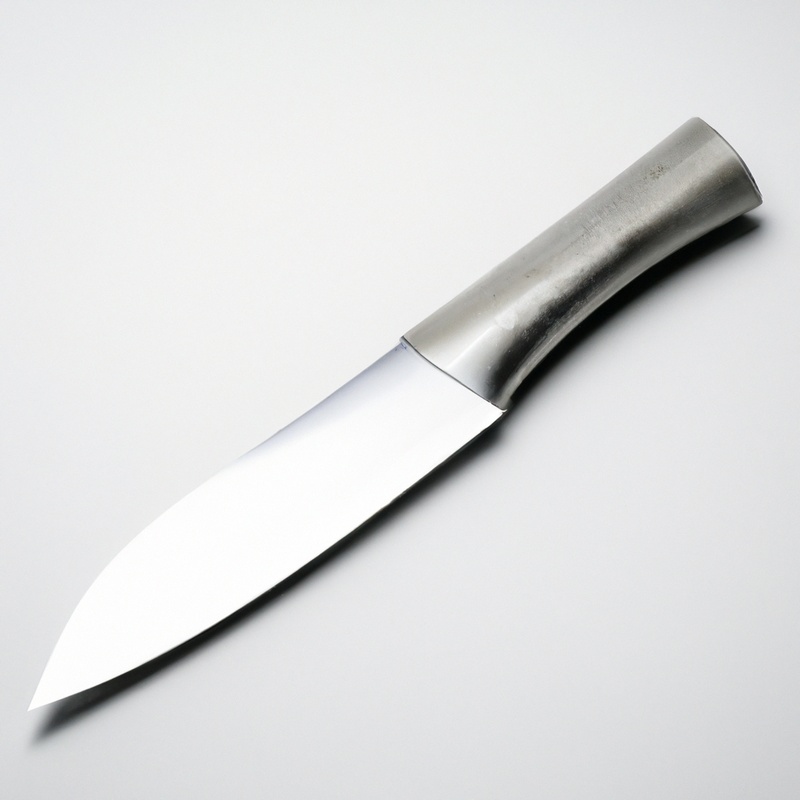
How to select the perfect ingredients for efficient and safe cutting with a Gyuto knife
When it comes to selecting ingredients for efficient and safe cutting with a Gyuto knife, there are a few things to keep in mind. First and foremost, choose fresh and high-quality ingredients that are not too hard or too soft.
Hard ingredients like nuts or carrots can damage or dull the blade, while soft ingredients like tomatoes can squish or tear.
When cutting protein, make sure it is slightly chilled or even partially frozen for a smooth and clean cut. This is especially important when dealing with raw meat or fish.
It is also essential to remove any bones or skin before cutting meat or fish with a Gyuto knife.
This will prevent any accidental slips or cuts and ensure that your knife stays sharp. Lastly, always use a stable cutting surface, such as a cutting board, to prevent your ingredients from shifting or sliding during the cutting process.
A damp paper towel or kitchen towel underneath the cutting board can also provide additional stability.
Overall, selecting the right ingredients for a Gyuto knife is crucial for both efficient and safe cutting. By following these tips, you can achieve perfect cuts with ease.
The importance of honing and stropping for continuous sharpness and smooth rocking motions
Honing and stropping are essential techniques to maintain the sharpness of your Gyuto knife and achieve smooth rocking motions. Honing helps to realign the microscopic teeth on the edge of the blade, which can curl over with regular use.
Stropping is a fine-tuning technique that polishes and smoothens the edge of the blade, making it razor-sharp and ideal for efficient cutting.
Regular honing and stropping help maintain the edge of your Gyuto knife, reduces the need for frequent sharpening, extends your knife’s lifespan, and ensures a safer and more enjoyable cutting experience. So, if you want to achieve continuous sharpness and smooth rocking motions with your Gyuto knife, make honing and stropping a regular part of your knife maintenance routine.
Basic cuts and techniques for rocking motion with a Gyuto knife
Basic cuts and techniques for rocking motion with a Gyuto knife:
- Rocking motion: Keep the tip of the blade in contact with the cutting board, pivot the heel up and down to make the blade rock back and forth.
- Slice: Hold the knife at a slight angle and pull back towards the heel, slicing through the ingredient in one fluid motion.
- Chop: Use a downward force to chop through the ingredient quickly, keeping forearm and wrist movement controlled.
- Minced: Chop ingredients into small pieces, using a rocking motion until the desired level of fineness is achieved.
- Julienne: Cut ingredients into thin sticks, keep the blade at a 45-degree angle to achieve a uniform cut.
Remember to use a light grip, maintain a consistent angle, and keep the blade sharp for smooth and efficient cutting with a Gyuto knife.
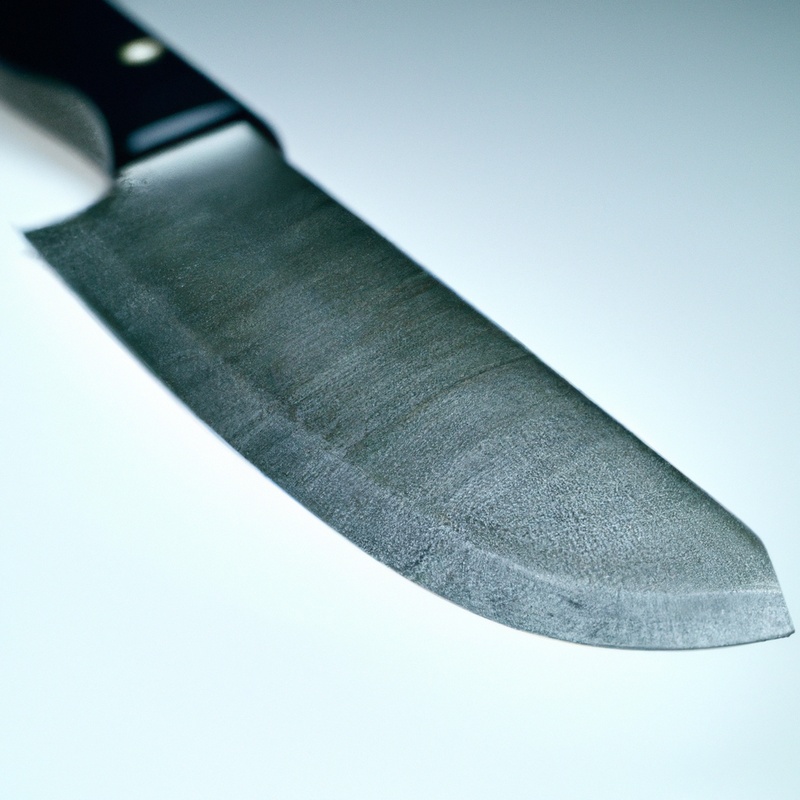
Mastering advanced cutting techniques for exceptional rocking motions using a Gyuto knife
Mastering the advanced cutting techniques with a Gyuto knife can take your rocking motions to the next level. The main key to mastering advanced cutting techniques is to let the knife do the work.
Instead of forcing the blade through the ingredients, make gentle and quick rocking motions with a sharp blade, allowing it to cut effortlessly through the food.
One of the advanced cutting techniques that you can use is the pinch grip. This technique allows you to exert precise control over the blade, making it easier to cut food evenly.
To use the pinch grip, hold the blade between your thumb and index finger just above the handle.
Another advanced technique is to use the tip of the Gyuto knife for intricate cuts like peeling, separating seeds, and trimming vegetables. You can also make precision cuts by using the middle portion of the blade.
To achieve smooth rocking motions, it is important to use a proper technique by keeping your wrist straight and the blade moving in the same direction.
Start by positioning the blade at the top of the ingredient and rock it forwards and backwards in a fluid motion. By mastering these advanced cutting techniques, you can enhance your precision, speed, and control with a Gyuto knife and create exceptional results.
Remember to practice regularly and use the right pressure and angle to achieve smooth rocking motions with ease.
Tips and tricks to take your Gyuto knife rocking motions to the next level
Here are some tips and tricks to take your Gyuto knife rocking motions to the next level:
- Use a proper grip: Hold your Gyuto knife with a relaxed and secure grip that feels comfortable in your hand.
- Focus on the rocking motion: Make sure to keep the bottom of the Gyuto knife in contact with the cutting board while you rock. This will ensure a smoother and more efficient cut.
- Use your body weight: Instead of relying solely on your arm strength, use your body weight to add pressure and power to your cuts.
- Keep the knife sharp: A sharp Gyuto knife will make rocking motions easier and more efficient. Use a honing rod or a sharpening stone to keep the blade in top condition.
- Experiment with angles: Try different angles to find the sweet spot that works best for you and your cutting style.
- Practice makes perfect: Repetition and practice are key to mastering the rocking motion with a Gyuto knife. Keep practicing and you’ll soon be a pro.
Final Verdict
Mastering the art of smooth rocking motions with a Gyuto knife requires patience, practice, and a deep understanding of its anatomy. By choosing the right cutting board, achieving the perfect grip and hand position, and sharpening your knife with the right angle and pressure, you can achieve effortless and efficient cutting.
Remember to select the perfect ingredients, hone and strop your knife for continuous sharpness, and master basic and advanced cutting techniques to take your rocking motions to the next level.
With these tips and tricks, you can become a true master of the Gyuto knife and elevate your culinary experiences to new heights. Trust in the knowledge presented here, and with practice, you’ll soon be the envy of your peers in the kitchen.

